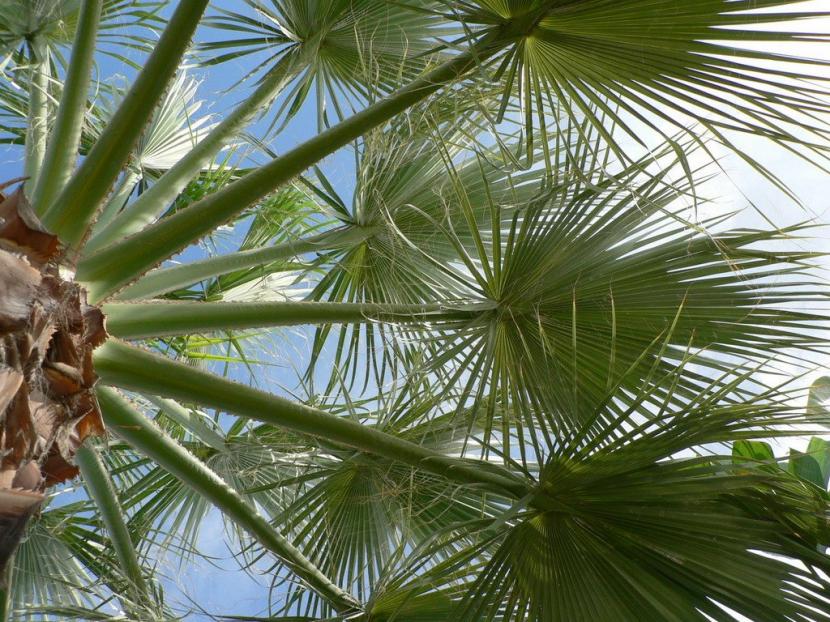
Licuala validates
The palm trees, the princesses of the garden. Anyone who has one or more specimens will be able to enjoy the gentle breeze from its leaves when the wind blows a little, from the shade it provides during the summer, and above all of its elegance during all the months of the year.
They are very adaptable plants, but unfortunately there are two pests that are reducing their population. For this reason, if you also want to have one in your home, you should know how to care for palm trees.

Underside of a Cocos nucifera leaf
The palm trees that we find for sale in nurseries and garden stores, and more specifically in their outdoor facilities, belong to species that are resistant to our climate. When we plan the design of the garden and we realize, because we feel it, that it can look much better with a plant of this type, it is very important that we plant one of a resistant species, otherwise we would end up wasting time and money . So as not to complicate us too much, It will be enough to take home a plant that has been grown abroad for at least a full year.
Once home, it will be time to find the best place for you. Whether we are going to plant it directly in the ground, or if it is going to be grown in a pot for a while, you should know that most palm trees have to be in direct sunlight, but there are some, such as those of the genus Chamaedorea, Howea, Licuala or Raphis, which prefer to be in semi-shade.

Robust Washingtonia
If we talk about irrigation and subscriber, both tasks will be done frequently from spring to late summer. Avoid letting the substrate or soil get waterlogged, but if that happens very occasionally, the plant will appreciate it. Add a few drops of specific fertilizer for palm trees and you will see how well it grows.
These are hardy plants, but they too can be affected by pests. The most commons are: cottony mealybug, San Jose louse, and the dreaded Red weevil y paysandisia archon. All of them can be treated and prevented by doing treatments with insecticides containing Chlorpyrifos or Imidacloprid during the warm months.
Do you like palm trees?
Excellent contribution thanks, another very efficient and economical insecticide against aphids and mealybugs is dimethoate, it is applied at sunset and 1.25ml is dissolved in 1L of water, with a duration of 15 to 30 days depending on climatic factors, does not affect the populations of ladybugs or ladybugs who feed on these pests, only attack aphids, mealybugs and thrips.
Another trick is to grow fennel nearby so that the ladybugs spawn on the plant and their larvae destroy entire populations of aphids and mealybugs before leaving the area as adults and returning for the next generation; fennel is an aromatic plant with a delicious aroma and very useful in the kitchen, from its seeds, to its foliage and bulb or tuber
Indeed, dimethoate is very effective in eliminating mealybug pests, even though it is very advanced. But if there are few, you can choose to remove them by hand.